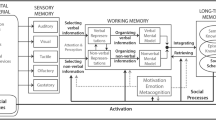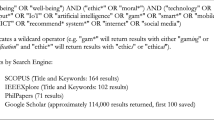Abstract
The emergence of new digital media has led to new sources and locations of power, and as a result, a heated debate on the regulability of cyberspace. The myth that cyberspace is by its nature free and uncontrollable has been challenged by Lessig's New Chicago School of Regulation that argues that code, or the architecture of information technologies, will be an important regulatory modality. This paper examines the relationship between regulation, information technologies and human behaviour, by examining what happens whenever individual human beings configure technology for use, in this case, file-sharing peer-to-peer applications. The evidence from the research suggests that Lessig's view does not capture all the nuances of practice involved in the use of peer-to-peer applications. The paper ends with proposals for future study of the actual practices of the users of this technology that will improve our understanding of the relationship between technology and regulation.
Similar content being viewed by others
References
Alderman J (2001) Sonic Boom: Napster, P2P and the Future of Music. Fourth Estate, London.
Baskerville RL and Myers MD (2002) Information systems as a reference discipline. MIS Quarterly 26(1), 1–14.
Biegel S (2001) Beyond Our Control?: Confronting the Limits of Our Legal System in the Age of Cyberspace. MIT Press, Cambridge, MA.
Flick U (1998) An Introduction to Qualitative Research. Sage, London.
Hosein I and Tsiavos P (2003) Beyond good and evil: why open source development for peer-to-peer networks does not necessarily lead to an open society, is as imbalanced as copyright law and definitely is not going to make you a better person. In 11th European Conference on Information Systems (Ciborra C, Mercurio R, De Marco M, Martinez M and Carignani A, Eds), Naples, Italy.
Hosein I, Tsiavos P and Whitley EA (2003) Regulating architecture and architectures of regulation: contributions from information systems. International Review of Computing Law and Technology 17(1), 85–97.
Introna LD and Whitley EA (2000) About experiments and style: a critique of laboratory research in information systems. Information Technology and People 13(3), 161–173.
Johnson DR and Post DG (1996) Law and borders–the rise of law in cyberspace. Stanford Law Review 48, 1367–1402.
King B (2002) The KaZaA ruling: What it means Archived at http://www.wired.com/news/print/0,1294,51457,00.html.
Latour B (2000) When things strike back: a possible contribution of ‘science studies’ to the social sciences. British Journal of Sociology 51(1), 107–123.
Lee AS and Baskerville RL (2003) Generalising generalizability in information systems research. Information Systems Research 14(3), 221–243.
Lessig L (1998) The New Chicago School. Journal of Legal Studies 27(June), 661–691.
Lessig L (1999) Code: And Other Laws Of Cyberspace. Basic Books, New York.
Murray A and Scott C (2002) Controlling new media: hybrid responses to new forms of power. Modern Law Review 65(4), 491–516.
Myers MD (1999) Investigating information systems with ethnographic research. Communications of the AIS 2(23), 1–13.
Oram A (2001) Peer-to-peer: Harnessing the Power of Disruptive Technologies. O'Reilly and Associates, Sebastopol, CA.
Orlikowski WJ (2000) Using technology and constituting structures: a practice lens for studying technology in organizations. Organizational Science 11(4), 404–428.
Pavlov OV and Saeed K (2003) A resource-based assessment of the Gnutella file-sharing network. In International Conference on Information Systems (March ST, Massey AP and De Gross JI, Eds), pp 85–95, Seattle, WA.
Samant K (2003) Free riding, altruism, and cooperation on peer-to-peer file-sharing networks. In International Conference on Information Systems (March ST, Massey AP and De Gross JI, Eds), pp 914–920, Seattle, WA.
Silverman D (1998) Qualitative research: meanings or practices? Information Systems Journal 8(1), 3–20.
Snir EM (2003) The record industry in an era of file-sharing: lessons from vertical differentiation. In International Conference on Information Systems (March ST, Massey AP and De Gross JI, Eds), pp 72–84, Seattle, WA.
Tsiavos P, Hosein I and Whitley EA (2003) The footprint of regulation: how information systems are affecting the sources of control in a global economy. In Organizational Information Systems in the Context of Globalization (Korpela M, Montealegre R and Poulymenakou A, Eds), pp 355–370, Kluwer, Boston, MA.
Tsiavos P, Whitley EA and Hosein I (2002) An exploration of the emergence, development and evolution of regulatory characteristics of Information Systems. In International Conference on Information Systems (Applegate L, Galliers RD and De Gross JI, Eds), Barcelona, Spain.
Wagner EL (2003) (Inter)Connecting information systems narrative research: Current status and future opportunities for process-oriented field studies. In Global and organizational discourse about information technology (Wynn EH, Whitley EA, Myers MD and De Gross JI, Eds), pp 419–436, Kluwer, Boston, MA.
Acknowledgements
The research presented in this paper is part of a larger body of work exploring the specific role of information technology in regulatory activities. We gratefully acknowledge ongoing discussions with our colleagues in this area, particularly Prodromos Tsiavos, Ian (Gus) Hosein, Anne Barron, Colin Scott and Andrew Murray. Discussions with Erica Wagner were particularly helpful for the design of the empirical study. We also acknowledge the insightful comments of the anonymous reviewers who have improved both versions of this paper.
Author information
Authors and Affiliations
Corresponding author
Rights and permissions
About this article
Cite this article
Mlcakova, A., Whitley, E. Configuring peer-to-peer software: an empirical study of how users react to the regulatory features of software. Eur J Inf Syst 13, 95–102 (2004). https://doi.org/10.1057/palgrave.ejis.3000493
Received:
Revised:
Accepted:
Published:
Issue Date:
DOI: https://doi.org/10.1057/palgrave.ejis.3000493




